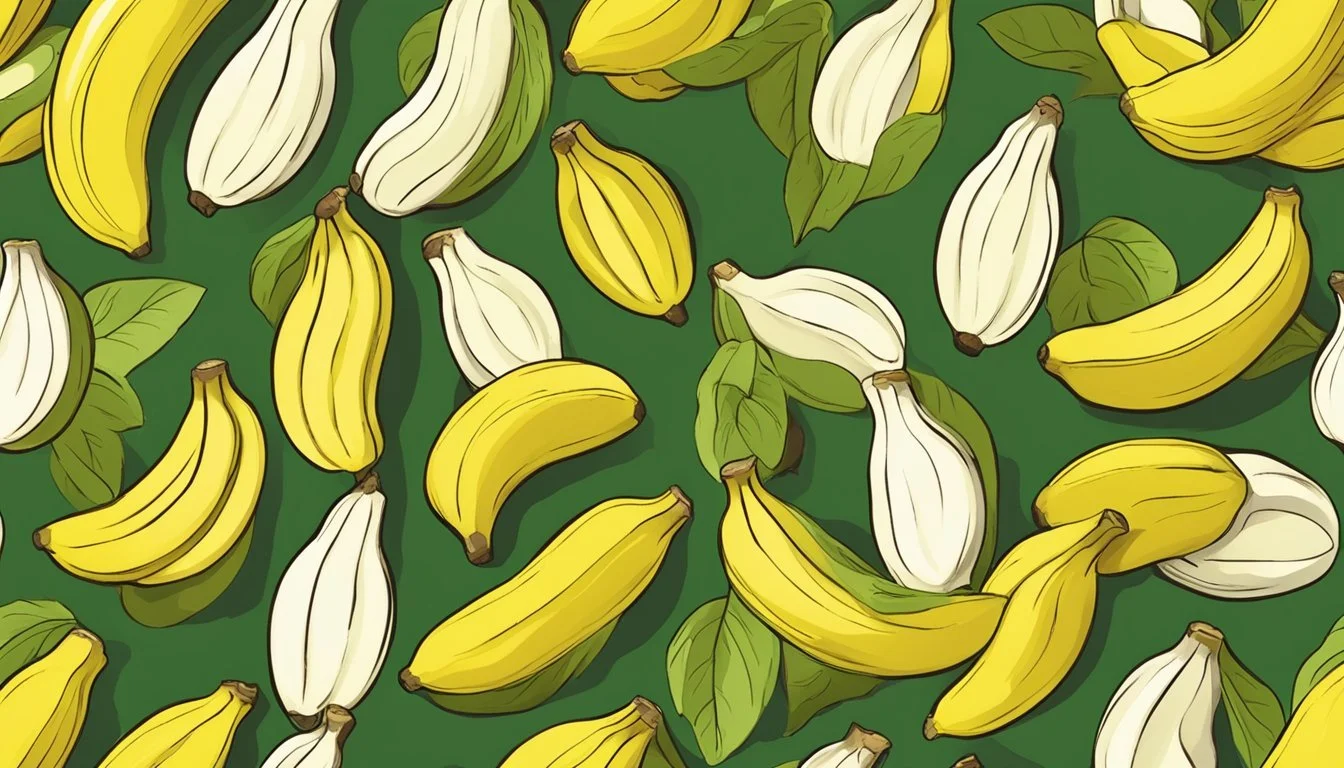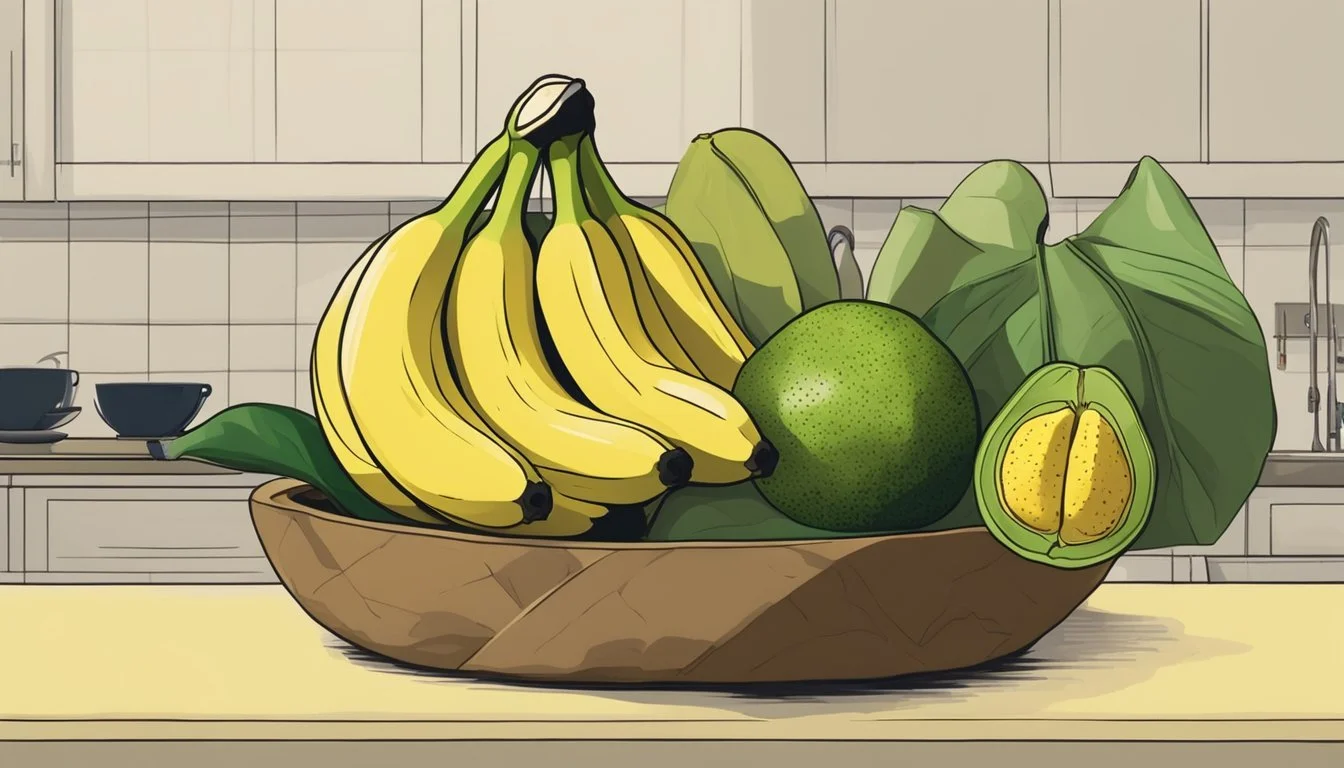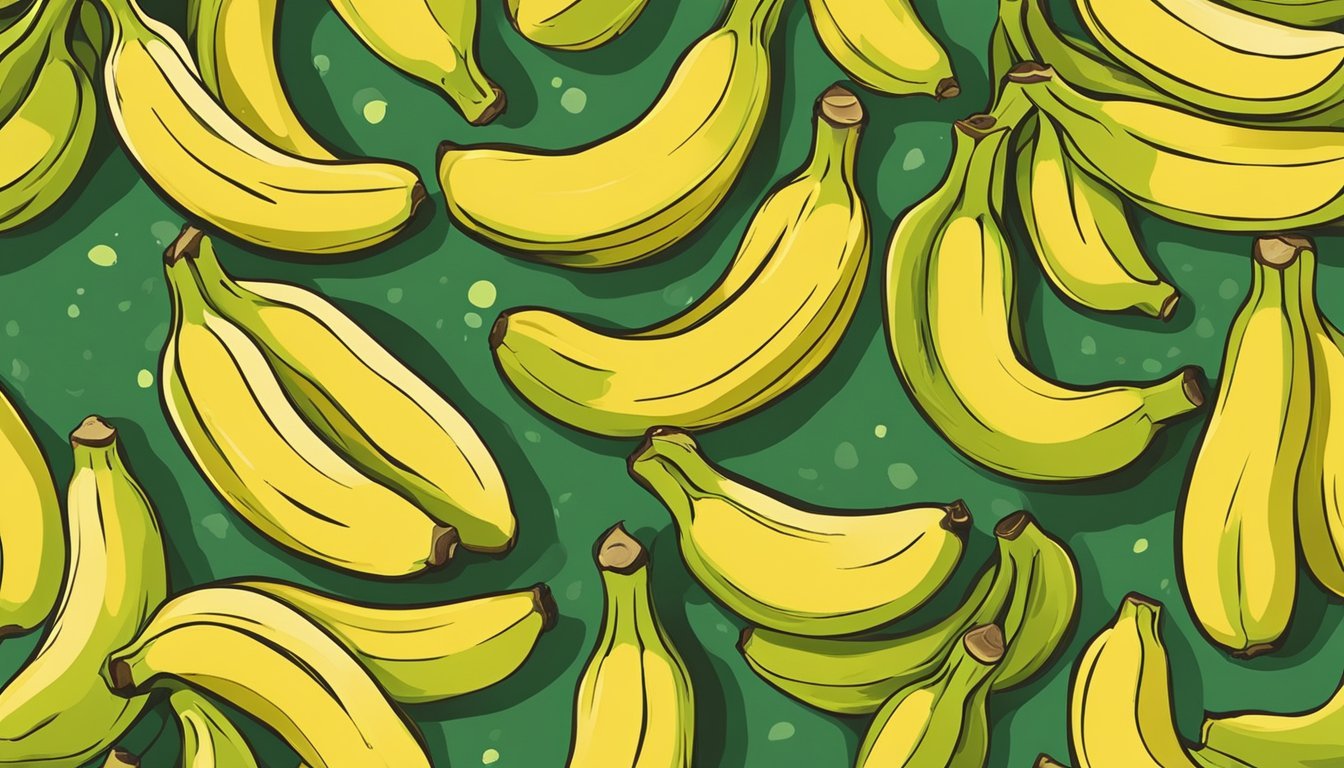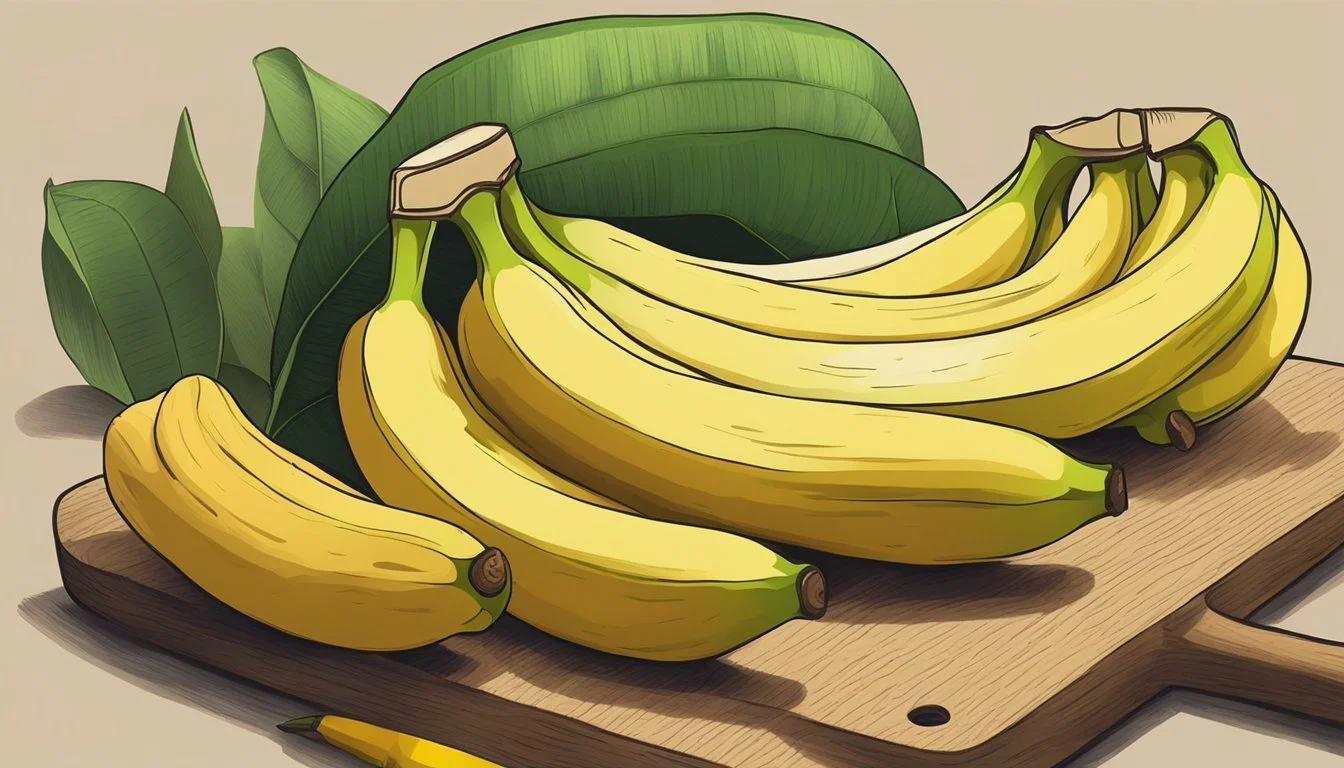How to Tell if Manzano Bananas Are Ripe
Identifying Peak Sweetness and Texture
Manzano bananas, also known as apple bananas, are a distinctive variety recognized for their sweetness and unique flavor reminiscent of apples or strawberries. Unlike the common Cavendish bananas, Manzano bananas don't follow the same visual cues for ripeness. Their thick, waxy skin darkens to a deep black when fully ripe, contrasting with the usual golden yellow of other banana varieties. The ripening process not only changes their color but also enhances the fruit's texture and taste, transforming them into a creamy and flavorful delight.
Understanding when a Manzano banana is ripe is crucial for enjoying its optimal taste and getting the most out of its nutritional value. As these bananas mature, they go through several stages, each indicated by the skin's color transformation from green to yellow to spotted brown. The flavor of the fruit evolves with ripeness, starting somewhat firm with a mild taste and becoming progressively softer and sweeter. Manzano bananas are an excellent source of vitamins, particularly vitamin B6, and dietary fiber when eaten at the peak of ripeness.
Key Takeaways
Manzano bananas show ripeness through a color shift to deep black skin.
A ripe Manzano offers a creamier texture and a sweeter, apple-like taste.
These bananas contribute beneficial vitamins and fiber to the diet when fully ripe.
Understanding Manzano Bananas
Manzano bananas, often known as apple bananas, are a distinct variety praised for their unique taste and textural properties. This section explores their background, highlights features that set them apart from common bananas, and offers comparisons with other varieties.
History and Origin
Manzano bananas originated in Southeast Asia and are now also cultivated in the Caribbean and Central America. This fruit is part of over 1,000 banana varieties worldwide, each with unique characteristics suited to its regional climate and soil conditions.
Characteristics of Manzano Bananas
Manzano bananas are smaller and plumper than the common Cavendish bananas, with a thicker skin that turns dark when ripe. Their flesh is creamy and has a sweet flavor reminiscent of apples and strawberries. These bananas are particularly noted for their firmer texture when compared to other varieties.
Comparison with Other Banana Varieties
Common Cavendish Bananas: The standard supermarket variety, Cavendish bananas are larger and have a milder flavor and softer texture than Manzano bananas. Cavendish bananas are best eaten when yellow with no brown spots.
Red Bananas: These have a reddish-purple skin and are creamier with a hint of raspberry flavor. They are generally sweeter than the Manzano when ripe.
Baby Bananas: Also known as mini bananas, these are shorter and sweeter than most banana varieties but lack the apple-like flavor of Manzano bananas.
Ripeness Indicators for Manzano Bananas
Manzano bananas, known for their unique flavor profile, exhibit clear ripeness indicators. These cues can help consumers choose bananas at their preferred stage of ripeness for optimal taste and texture.
Visual Clues
Ripe Manzano bananas transition from green to yellow and eventually develop brown spots. These spots signal the peak of ripeness. The banana's color is key; green indicates underripe, while a yellow hue with brown spots typically means the fruit is ready to eat. Unlike the common Cavendish variety, which is best eaten when brightly yellow, Manzano bananas reach their flavor pinnacle once spotting begins.
Green: Underripe, not recommended for eating
Yellow with Brown Spots: Ripe, ideal for consumption
Texture and Firmness
A ripe Manzano banana will feel firm yet yield slightly to gentle pressure, suggesting the inner fruit is soft and ripe. Overripe bananas may feel too mushy and lack structure, while underripe bananas show excessive firmness. The optimal texture is a balance between the two, indicating that the banana is ready to eat.
Firm and Resistant: Underripe
Slightly Soft when Pressed: Ripe
Mushy: Overripe
Aroma and Smell
Ripe Manzano bananas emit a sweet and distinctly fruity aroma, which can be a helpful indicator of readiness. Unripe bananas typically lack a noticeable scent, as they have not developed the sugars that contribute to the sweet fragrance of a ripe banana. The presence of a sweet smell is one of the final confirmations that the banana has reached its ideal stage of ripeness.
Lack of Scent: Likely underripe
Sweet, Fruity Aroma: Indicates ripeness
Health and Nutritional Information
Manzano bananas, like their more common Cavendish counterparts, are a beneficial addition to one's diet due to their nutritional content, particularly when it comes to their vitamin and mineral profile and natural sugars.
Caloric and Sugar Content
A 100-gram serving of Manzano bananas contains approximately 107 calories. The natural sugar content in Manzano bananas contributes to their overall caloric value, making them an energy-dense fruit. As Manzano bananas ripen, their sugar content becomes more concentrated, altering not only taste but also the quickness at which their carbohydrates can be digested.
Vitamins and Minerals
Potassium: Manzano bananas are a significant source of potassium; the same serving size offers close to 10% of the daily value. Potassium is pivotal for maintaining proper heart function and regulating blood pressure.
Vitamin C: This fruit is also a contributor of Vitamin C, which is crucial for immune function and skin health.
Fiber: They possess dietary fiber, which aids in digestion and contributes to overall gut health.
Iron: Though not as high as some other foods, Manzano bananas do provide iron, which is necessary for blood health.
Nutritional Breakdown:
Calories: 107 kcal
Carbohydrates: 27.2 grams
Fiber: About 3 grams
Protein: 1.3 grams
The nutritional content of Manzano bananas showcases them as not only a quick source of energy but also an ally for maintaining various aspects of personal health. Their consumption offers carbohydrates for energy, fiber for digestion, potassium for heart health, and vitamins for overall bodily function.
Choosing and Buying Manzano Bananas
When it comes to Manzano bananas, understanding the nuances of ripeness and sourcing can significantly enhance one's buying experience.
Where to Buy
Manzano bananas, also known as apple bananas, are primarily cultivated in tropical regions such as South America, Mexico, and Florida. Consumers can source these bananas from a variety of places:
Grocery Stores: Look in the tropical or exotic fruit section.
Specialty Stores: These are likely to carry rarer fruit varieties.
Local Markets: Fresh produce markets often have Manzano bananas when in season.
Distributors: Some may offer direct sale of bulk or specialty fruits (What wine goes well with fruits?).
Selecting the Best Fruit
Selecting the ripest and best quality Manzano bananas involves careful observation:
Color: Seek bananas with no green, turning yellow with brown spots. This indicates ripeness without overripening.
Texture: Gently press to ensure the fruit is firm but not hard or overly mushy.
Appearance: Choose bananas that are bright in color, plump, and free from bruises or moist spots.
Smell: Ripe Manzano bananas may emit a sweet, fruity aroma.
By following these guidelines, buyers are more likely to purchase Manzano bananas at the perfect stage of ripeness for immediate consumption or use in recipes.
Storage and Shelf Life
When selecting and storing Manzano bananas, understanding their unique ripening process and ideal storage conditions ensures that they maintain optimal taste and texture. These bananas differ from the common Cavendish variety and require specific care to maximize their shelf life.
Best Practices for Preservation
Temperature Control: Manzano bananas thrive at room temperature away from direct sunlight. Temperatures between 58°F to 68°F (14°C to 20°C) are considered ideal. Storing bananas at a consistent temperature helps delay the release of ethylene gas, a naturally occurring hormone that accelerates ripening.
Avoid Moisture: Excess moisture can lead to premature spoilage. To prevent this, store bananas in a well-ventilated area.
Ethylene Gas Management: Keep them away from other ethylene-producing fruits unless faster ripening is desired.
Use of a Paper Bag: If ripening needs to be hastened, placing Manzano bananas in a paper bag traps ethylene gas and speeds up the process.
Handling Overripe Bananas
Once Manzano bananas have become overripe, characterized by a strong sweet odor and a very soft texture, they are still useful for a variety of culinary applications, though they are no longer ideal for eating fresh.
Refrigeration: Overripe bananas can be refrigerated to slow further degradation. The skin will blacken, but the fruit inside remains edible for a short period.
Freezing: For longer preservation, peel and freeze bananas in an airtight container or a freezer bag. They can be used later for smoothies or baking.
Baking: Overripe Manzano bananas are perfect for baking, as their heightened sweetness and moisture content lend a desirable flavor and texture to breads and muffins.
Using Manzano Bananas in Cooking
Manzano bananas offer a unique flavor profile and texture that makes them versatile in the kitchen. They can be used to enhance both sweet and savory dishes, and are particularly prized for their apple-like sweetness when ripe.
Snack and Dessert Ideas
Manzano bananas can be a key ingredient in a variety of snacks and dessert options. Thanks to their sweet taste, they work exceptionally well in fruit salads and can be an exciting twist to traditional desserts. Here are a few ideas:
Fruit Salads: Dice ripe Manzano bananas and mix with other tropical fruits.
Smoothies: Blend with yogurt or milk for a refreshing drink.
Ice Cream: Puree and fold into homemade ice cream bases.
Fritters: Slice and dip in batter before frying to golden perfection.
Pies and Puddings: Mash and use as a filling for pies or layer in puddings for a rich flavor.
Manzano Banana Recipes
When baking or cooking with Manzano bananas, remember that their sugars caramelize beautifully, adding a depth of flavor to baked goods.
Bread: Substitute Manzano bananas in banana bread recipes for a twist.
Muffins: Incorporate mashed Manzano bananas into muffin batter to create moist, flavorful treats.
Cakes: Use them in banana cakes or as a topping for plain cakes.
Desserts: Enhance desserts by topping them with caramelized slices of Manzano banana.
Manzano bananas provide a natural sweetness and a moist texture when used as an ingredient, making them a superb addition to many recipes, from snacks to sumptuous desserts.
Creative Pairings and Flavor Combinations
Selecting the perfect accompaniments can enhance the intrinsic flavor of ripe Manzano bananas. Experimenting with ingredients and beverages that complement the fruit's sweetness and texture provides an enjoyable culinary experience.
Complementary Foods and Ingredients
Dairy: Ripe Manzano bananas pair well with creamy textures. Try slicing them over a bowl of oatmeal or mixing them into breakfast yogurt. The contrast between the sweet fruit and rich dairy amplifies the taste.
Yogurt: Incorporate chunks of Manzano banana for a breakfast treat.
Cream: Whip cream slightly sweetened with honey to top sliced bananas.
Confections: A drizzle of honey adds natural sweetness that complements the fruit's flavor profile.
Cereals:
Oatmeal: Adding Manzano banana slices introduces a sweet, apple-like flavor.
Granola: For a crunchy texture, mix in banana pieces with your morning granola.
Berries: Combine with berries such as strawberries for a fruity burst of flavor.
Strawberry: The classic combination of bananas and strawberries can never go wrong.
Baked Goods: Incorporate Manzano banana into bread or muffins for moisture and a hint of apple sweetness.
Beverage and Smoothie Enhancements
Smoothies: Blend Manzano bananas with other fruits to create a refreshing beverage. They provide a rich, sweet base that pairs exceptionally well with tangy or tart flavors.
Berry & Banana Smoothie: Combine ripe Manzano bananas with strawberries and a splash of yogurt for a balanced and nutritious drink.
Juices:
Citrus accents: Add banana chunks to a citrusy juice for a harmonious blend of flavors.
Milkshakes:
Banana milkshake: Blend until smooth with milk or a dairy-free alternative for a sweet, indulgent treat.
Incorporating Manzano bananas into various dishes and beverages can unlock new taste experiences. With a distinctive sweet flavor reminiscent of apples, the ripe Manzano banana is quite versatile in the culinary world.
Culinary Inspirations from Around the World
Exploring the versatility of Manzano bananas offers a glimpse into the tropical tapestry of culinary practices. From the Caribbean to Hawaii, these bananas bring a unique twist to both traditional and modern recipes.
Tropical and Exotic Pairings
In tropical countries, the inherent sweetness of Manzano bananas is often coupled with acidic or tangy flavors to create a balance. For instance, Caribbean cuisine might pair these bananas with citrus-infused grilled fish, enhancing both dishes with a contrasting yet harmonious flavor profile. In the United States, especially in regions like Hawaii, Manzano bananas are not uncommon in fruit salads mingled with pineapple and papaya, often highlighted with a hint of lime.
Caribbean: Manzano bananas and citrus-infused grilled fish
Hawaii: Fruit salads with Manzano bananas, pineapple, papaya, and lime
Traditional and Modern Uses
Throughout the tropical regions, bananas, including plantains and Manzano varieties, serve both as staple ingredients and as vehicles for other flavors. Plantains, often used in savory dishes, can be found in the classic Caribbean dish Mofongo, while Manzano bananas, owing to their firmer texture even when ripe, might be baked into pastries or used in sautéed dishes (What Wine Pairs Best with Sautéed Dishes) in the Caribbean and the United States.
Caribbean Savory: Mofongo - mashed plantains with garlic and pork cracklings
Dessert Banana: Baked pastries with Manzano bananas
In desserts, different types of bananas such as the Lady Finger and Burro varieties are frequently used, but Manzano bananas provide a fresh alternative due to their apple-like flavor notes. The practice of using slightly spotted to fully ripe Manzano bananas is common for their sweeter taste and softer texture.
Lady Finger/Burro: Common dessert bananas
Manzano: Used for their sweet, apple-like flavor in baked goods
The lesser-known Green bananas, not to be confused with unripe bananas, are sometimes used much like plantains thanks to their firmness and milder flavor, contributing a subtler banana essence to dishes without overwhelming other ingredients.
Green Bananas: Used as a vegetable in cooking for their firmness and mild flavor








